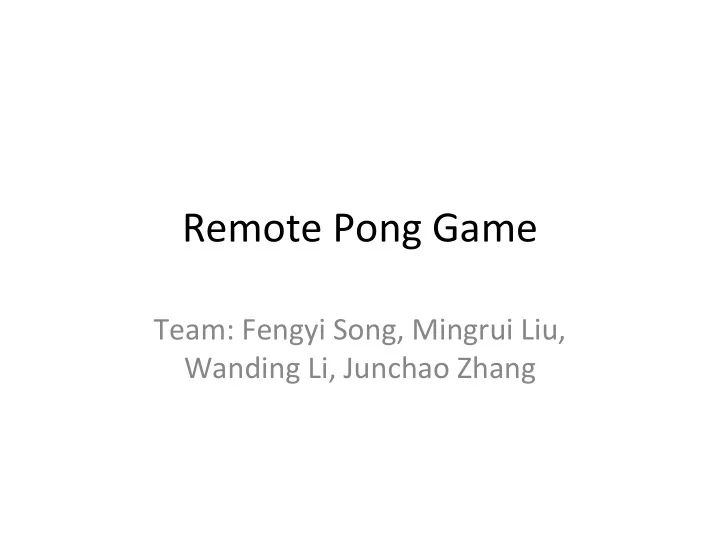

Remote Pong Game Team: Fengyi Song, Mingrui Liu, Wanding Li, Junchao Zhang
Project Overview • Remote Pong Game – Hardware: Image Display, Audio Effects – Software: Game Logic, Device Driver – Peripheral Controller: Wii remote controller
Project Overview
Audio Effects in Hardware • Operate at audio clock 11.3 Mhz( PLL ) • Use I2C protocol to configure codec SSM 2603 • Store audio samples in the on chip ROM • Two clocks derived from audio clock Channel clock: Send sample on one channel at a time. Bit clock: Send one bit of each sample.
Audio Block Diagram
Game UI Display sprite4 sprite1 sprite5 sprite2 sprite6 sprite3
Game Over two 1-bit logic: zone & data (1/0)
Software Process
Wii Controller • Connected with Sockit using Bluetooth • Dongle as position sensor light • Software preparation – Libwiimote (C-library) – Linux Device Driver: BlueZ, libwiimote-dev – Scale the screen size from 1784*1272 to 512*480 by using wiimote open source API
Game Logic Controller Game logic API: Write_ball(); • Game status: Wirte_on(); Write_life(); Write_paddle(); On,score,life,paddle coord, Write_over(); Write_score(); Ball coords,over Pthread_function() { mutex_lock; • Pthread: updating paddle coords; mutex_unlock; Updating paddle coords } Main() { • Check boarder: pthread(); while(1) { Check ball and brick updating game status; check boarder; } }
Device Driver • Ioctl calls to write positions(x, y) of ball, paddle, scores, remaining lives, game_over and brick on and off. • VGA memory: 3-bit address, 32- bit words
Experiences and Issues • Image Display – Complex display logic (sample duplicating) • Audio Effects – Synchronization between software and hardware • Game Logic – Multithreaded and synchronization (mutex) – Missing libraries(Bluez)
Recommend
More recommend